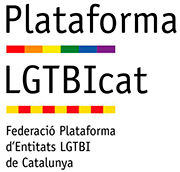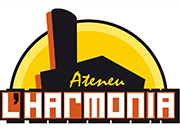homomonument
12/January/2008
The Homomonument, situated on the Westermarkt in the center of Amsterdam, was unveiled on September 5th 1987. The Homomonument was designed to inspire and support lesbians and gays in their struggle against denial, oppression and discrimination. It is also a memorial to the men and women of the past who were oppressed and persecuted because of their homosexual feelings.
The Homomonument is above all a living monument. It is a permanent confrontation with the existence of homosexuality. This monument has it's own website, with on-line leaflets in 11 languages.
background
In western civilization homosexuality has for centuries been seen as one of the most severe violations of the law of nature. Based on biblical texts (Sodom and Gomorrah), homosexual acts were considered to be a form of heresy for which God would severely punish mankind. At certain times in history, sodomites were persecuted. This happened in The Netherlands in the 1730's. In 1933 the Nazis came to power in Germany. In their ideal of a pan-Germanic Reich populated by 'noble Germans', Jewish, Roma / Sinti and homosexual women and men were seen to be a danger to the 'vigour of the German people'. About 50,000 people were sentenced because of their homosexuality and several thousands of them died in concentration camps. Outside of the gay community, this persecution of homosexuals is usually ignored.
In the 1960's radical lesbian and gay activists demanded the right to be treated equally with other members of society. On May 4th 1970, the Young Amsterdam Gay Action Group (Amsterdamse Jongeren Aktiegroep Homoseksualiteit) laid a wreath during the National Rememberance ceremony on Dam Square in memory of homosexuals exterminated during the war. The authorities considered this improper and arrested the 'disturbers of the peace'.
initiative
In May 1979 the PSP Gay Group took the initiative to set up a Homomonument. The idea received broad support from the gay and lesbian movement. The committee members came from the COC, the lesbian group 7152 and the gay groups of all the political parties from left to right. The initative was also enthusiastically supported internationally.
An important aspect of the monument was that it should address both men and women. It was also not meant to be a traditional monument tucked away in some dark corner, but a living monument in the center of the city. It was also not intended to be a monument only to those who suffered under the Nazi regime. Oppression of homosexuality existed long before the Nazis and continues up to the present day.
The Homomonument has three dimensions: a warning from the past, a recognition and confrontation with the present, and an inspiration for the future. With these aspects in mind, artists were invited to submit designs and a jury was assembled consisting of experts in the fields of art and design. In order to raise funds, a Committee of Recommendation was formed consisting of people who were nationally active in politics, the arts, and religious life.
design
The jury unanimously choose Karin Daan's design which is based on the concept of adding an element to the surroudings which then becomes a part of them. The basis of her design is the situation at the site: a bend in the quay-wall of the canal. Here she designed a triangle out of pink granite. The pink triangle was the sign homosexuals had to wear in the Nazi concentration camps.
During the 1970's it became fashionable for gays and lesbians to wear a pink triangle to confront others with their sexual orientation.
With the triangle on the water as its central point, Karin Daan expanded the design to make her work as monumental as possible without disrupting the surroundings.
As well as the triangle on the water, there is a podium triangle on land 60 cm high and a memorial triangle at street level. All the triangles measure 10 x 10 x 10 meters, creating one large triangle with sides of 36 meters. A special type of tree was planted near the triangle on the water. Between the triangles, daily life carries on undisturbed (including the busy taxi stand).
funding
It took eight years to raise the necessary funds (€ 180,000) to build the monument. Some of it came from donations from individuals and gay organisations. Another important source were the proceeds of several benefit festivals such as the Spring Festival in 1980 and a 'Homomonu-month' in October 1981. On December 7 1986, the 'Night before Daybreak' took place in the famous Amsterdam Concertgebouw. Several days later the Dutch Parliament donated € 50,000 allowing construction to begin. The city of Amsterdam, the Province of North Holland and a ministry had already made large contributions.
construction
On April 28 1987, Mini Luimstra-Albeda, the Christian Democrat alderman for the arts, laid the first foundation of the monument. Concrete was then poured, the steps put in place and the monument was finished with polished pink granite. On the triangle pointing towards the Anne Frank House is a line of poetry by Jacob Israel de Haan (1881-1924): 'SUCH AN ENDLESS DESIRE FOR FRIENDSHIP' ('naar vriendschap zulk een mateloos verlangen')
site
On September 5, 1987, exactly 100 months after the first initiative, the Homomonument was unveiled. The relationship with its surroundings is emphasized by the 'podium triangle', 60 cm high, which points to the nearby center for the struggle for lesbian and gay liberation, the COC. Furthermore the 'memorial triangle' with its line of poetry points to the nearby Anne Frank House, the center for the struggle against fascism, antisemitism and racism. The third triangle, on the water, points to the National War Memorial on the Dam.
to a young fisherman
Roses are not as lovely as your cheeks,
Tulips not as tender as your bare feet,
And in no other eyes have I ever seen
Such an immense longing for friendship.
Behind us was the eternity of the sea,
Above us paled grey the eternal sky
On the lonely beach wandered just the two of us
There was nothing else but the din of the sea.
The last day together I went to my City.
You sail and fish contentedly, I wander around
But find refuge in the city nor in the quieter countryside
I am so tired, I have loved much..
Forgive me much, ask not what I have withstood
And pray I never succumb to your beauty.
Jacob Israel de Haan




